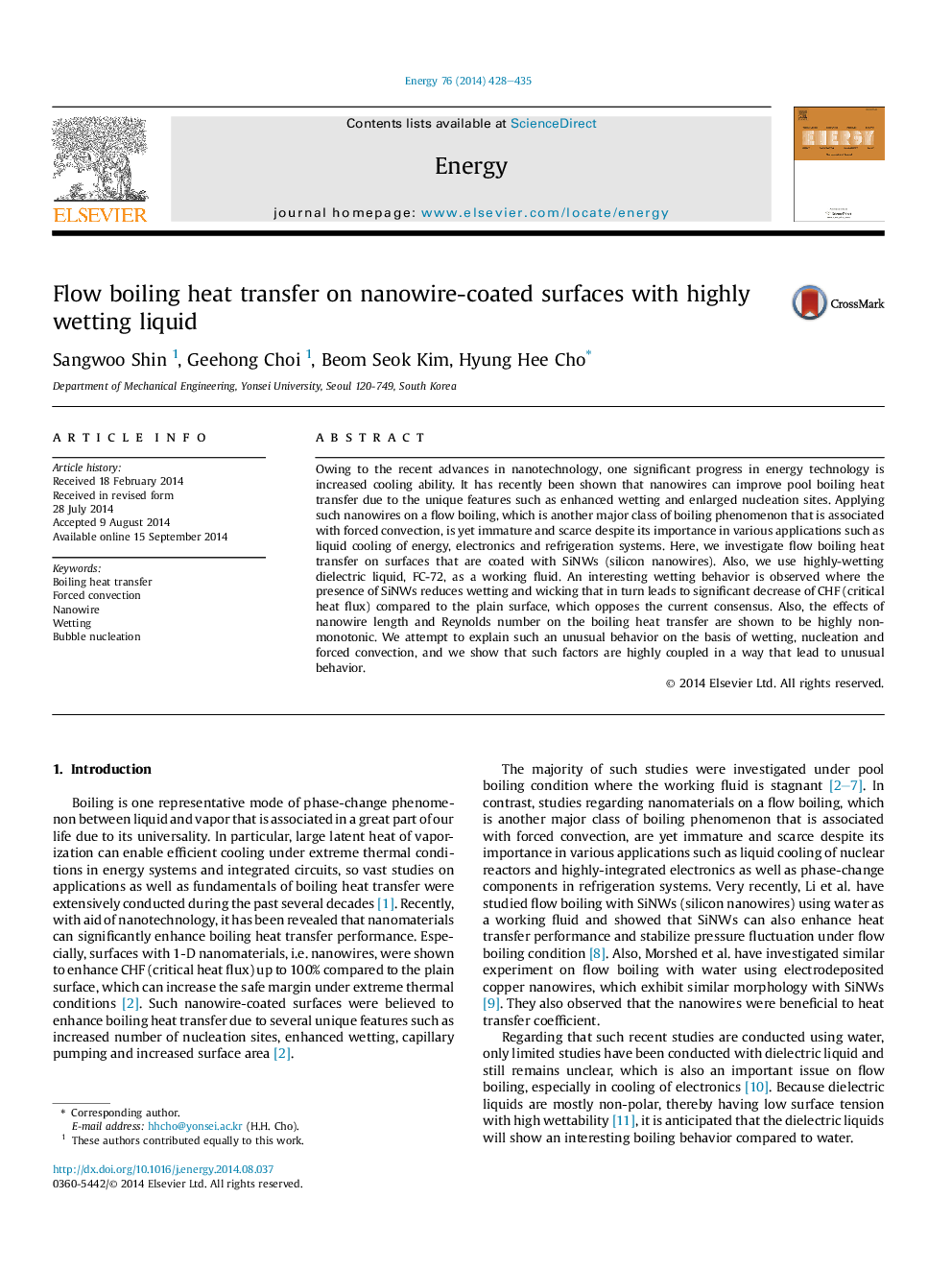| Article ID | Journal | Published Year | Pages | File Type |
|---|---|---|---|---|
| 8076769 | Energy | 2014 | 8 Pages |
Abstract
Owing to the recent advances in nanotechnology, one significant progress in energy technology is increased cooling ability. It has recently been shown that nanowires can improve pool boiling heat transfer due to the unique features such as enhanced wetting and enlarged nucleation sites. Applying such nanowires on a flow boiling, which is another major class of boiling phenomenon that is associated with forced convection, is yet immature and scarce despite its importance in various applications such as liquid cooling of energy, electronics and refrigeration systems. Here, we investigate flow boiling heat transfer on surfaces that are coated with SiNWs (silicon nanowires). Also, we use highly-wetting dielectric liquid, FC-72, as a working fluid. An interesting wetting behavior is observed where the presence of SiNWs reduces wetting and wicking that in turn leads to significant decrease of CHF (critical heat flux) compared to the plain surface, which opposes the current consensus. Also, the effects of nanowire length and Reynolds number on the boiling heat transfer are shown to be highly nonmonotonic. We attempt to explain such an unusual behavior on the basis of wetting, nucleation and forced convection, and we show that such factors are highly coupled in a way that lead to unusual behavior.
Related Topics
Physical Sciences and Engineering
Energy
Energy (General)
Authors
Sangwoo Shin, Geehong Choi, Beom Seok Kim, Hyung Hee Cho,
